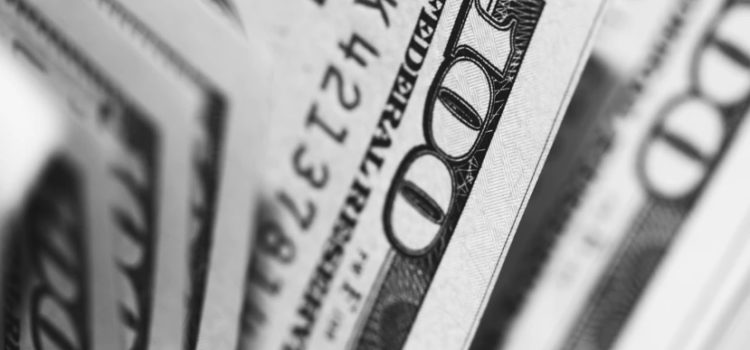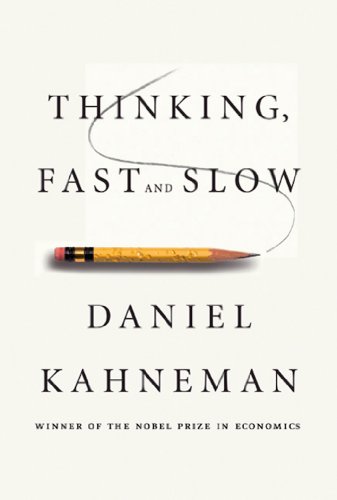

This article is an excerpt from the Shortform summary of "Thinking, Fast and Slow" by Daniel Kahneman. Shortform has the world's best summaries of books you should be reading.
Like this article? Sign up for a free trial here .
What is Amos Tversky and Daniel Kahneman’s prospect theory? How does it explain human behavior?
Prospect theory is a theory in economics developed by Amos Tversky and Daniel Kahneman. It says that Utility depends on changes from one’s reference point rather than absolute outcomes. The theory suggests that people don’t always behave rationally.
We’ll cover what Kahneman’s prospect theory is, how it works, and how it challenges traditional utility theory.
The Prospect Theory of Kahneman
Before we detail prospect theory, let’s look at the theory it challenged, expected utility theory.
Traditional Expected Utility Theory
Traditional “expected utility theory” asserts that people are rational agents that calculate the utility of each situation and make the optimum choice each time.
If you preferred apples to bananas, would you rather have a 10% chance of winning an apple, or 10% chance of winning a banana? Clearly you’d prefer the former.
The expected utility theory explained cases like these, but failed to explain the phenomenon of risk aversion, where in some situations a lower-expected-value choice was preferred.
Consider: Would you rather have an 80% chance of gaining $100 and a 20% chance to win $10, or a certain gain of $80?
The expected value of the former is greater (at $82) but most people choose the latter. This makes no sense in classic utility theory—you should be willing to take a positive expected value gamble every time.
Furthermore, it ignores how differently we feel in the case of gains and losses. Say Anthony has $1 million and Beth has $4 million. Anthony gains $1 million and Beth loses $2 million, so they each now have $2 million. Are Anthony and Beth equally happy?
Obviously not – Beth lost, while Anthony gained. Puzzling with this concept led Kahneman to develop prospect theory.
Prospect Theory v. Expected Utility Theory
The key insight from the above example is that evaluations of utility are not purely dependent on the current state. Utility depends on changes from one’s reference point. Utility is attached to changes of wealth, not states of wealth. And losses hurt more than gains. This is Kahneman’s prospect theory definition.
Consider that you probably don’t know your wealth to the nearest hundred, or even the nearest thousand. But the loss of $100—from an overcharge, or a parking ticket—is very acute. Isn’t this odd?
Prospect Theory Thought Experiments
Consider these two prospect theory problems:
1. You have been given $1,000. Which do you choose:
- 50% chance to win another $1,000 and 50% chance to get $0, or
- Get an additional $500 for sure
2. You have been given $2,000. Which do you choose:
- 50% chance to lose $1,000, and 50% chance to lose $0
- Lose an additional $500 for sure
(Shortform note: if you’re in the fortunate position of having enough wealth so that these numbers aren’t very compelling to you, try multiplying them by 10x or even 100x, to get to a place where you think hard about the outcome.)
Note these are completely identical problems. In both cases, you have the certainty of ending with $1,500, or equal chances of having $1,000 or $2,000. Yet you probably chose different answers.
You were probably risk-averse in problem 1 (choosing the sure bet), and risk-seeking in problem 2 (choosing the chance). This is because your reference points were different – from one point you were gaining, and in the other you were losing. And losses hurt more than gains, so you try to protect yourself against a loss.
Prospect theory seeks to explain all of the above.
Prospect Theory in 3 Points
1. When you evaluate a situation, you compare it to a neutral reference point.
- Usually this refers to the status quo you currently experience. But it can also refer to an outcome you expect or feel entitled to, like an annual raise. When you don’t get something you expect, you feel crushed, even though your status quo hasn’t changed.
2. Diminishing marginal utility applies to changes in wealth (and to sensory inputs).
- Going from $100 to $200 feels much better than going from $900 to $1,000. The more you have, the less significant the change feels.
3. Losses of a certain amount trigger stronger emotions than a gain of the same amount.
- Evolutionarily, the organisms that treated threats more urgently than opportunities tended to survive and reproduce better. We have evolved to react extremely quickly to bad news.
The master image of prospect theory is this:
The graph shows how psychological value changes according to the change in dollar amount. The middle of the two axes is the reference point—with no change, there is no psychological value. Psychological value is positive with positive dollar amounts (when you gain money) and negative with negative dollar amounts.
This graph was established through a host of experiments investigating how people perceive gains and losses, and how they trade off decisions like Anthony and Beth above. This demonstrates prospect theory.
Note two important properties of the prospect theory curve shown:
- Diminishing marginal value: the curve isn’t a straight line on either end. The more money you gain, the less value each increment of money gives you. The same is true of losing money—losing $100 causes less anguish than 10x the anguish of losing $10.
- Loss aversion: the curve on the left of the y-axis has a steeper slope than the curve to the right of the y-axis. This signifies that the psychological pain of losing $100 is greater in intensity than the joy in gaining $100. Losses hurt more than gains do.
People have different curves, depending on their sensitivity to loss aversion. The ratio of slopes is called the “loss aversion ratio.” For most people, the ratio ranges between 1.5 to 2.5 – people would have to gain $200 to offset a loss of $100. In contrast, professional risk takers, like stock traders, are more tolerant of losses and have a lower loss aversion ratio, possibly because they have psychologically adapted to large fluctuations.
Revisiting Anthony and Beth
Let’s revisit the scenario with Anthony and Beth. Anthony has $1 million and Beth has $4 million. They both have the following choices:
- 50% chance of ending with $1 million or 50% chance of ending with $4 million
- 100% chance of ending with $2 million
Anthony chooses the option 2, while Beth chooses option 1.
Prospect Theory now explains why. From the curve above, see that:
- For gains, 100% of 100 is larger than 50% of 200, because of how the curve flattens with more money. People are risk averse to get gains. Anthony would rather lock in a certain gain than risk getting nothing.
- For losses, 50% of -200 is less negative than 100% of -100. People are risk seeking to avoid losses. Beth would rather risk losing more if there’s a chance she keeps her money, than to have a certain loss.
While Bernoulli presented utility as an absolute logarithmic scale starting from 0, prospect theory calibrates the curve to the reference point. People feel differently depending on whether they’re gaining or losing money.
Prospect Theory Implications
There are a few practical implications of prospect theory.
Possibility Effect
Consider which is more meaningful to you:
- Going from a 0% chance of winning $1 million to 5% chance
- Going from a 5% chance of winning $1 million to 10% chance
Most likely you felt better about the first than the second. The mere possibility of winning something (that may still be highly unlikely) is overweighted in its importance. We fantasize about small chances of big gains. We obsess about tiny chances of very bad outcomes. This is an effect of prospect theory.
Certainty Effect
Now consider how you feel about these options on the opposite end of probability:
- In a surgical procedure, going from a 90% success rate to 95% success rate.
- In a surgical procedure, going from a 95% success rate to 100% success rate
Most likely, you felt better about the second than the first. Outcomes that are almost certain are given less weight than their probability justifies. 95% success rate is actually fantastic! But it doesn’t feel this way, because it’s not 100%. This is another effect of prospect theory.
Status Quo Bias
You like what you have and don’t want to lose it, even if your past self would have been indifferent about having it. For example, if your boss announces a raise, then ten minutes later said she made a mistake and takes it back, this is experienced as a dramatic loss. However, if you heard about this happening to someone else, you likely would see the change as negligible. Again, an effect of prospect theory.
Framing Effects
The context in which a decision is made makes a big difference in the emotions that are invoked and the ultimate decision. Even though a gain can be logically equivalently defined as a loss, because losses are so much more painful, different framings may feel very different.
For example, a medical procedure with a 90% chance of survival sounds more appealing than one with a 10% chance of mortality, even though they’re identical.
The Fourfold Pattern of Prospect Theory
Putting prospect theory into another summary form, here’s a 2×2 grid showing how people feel about risk in different situations. The upper left quadrant shows how people feel about a high probability of a gain, the upper right shows how people feel about a high probability of a loss, and so on.
| GAINS | LOSSES | |
| HIGH PROBABILITY Certainty Effect | 95% chance to win $10,000 vs 100% chance to win $9,500 Fear of disappointment RISK AVERSE Accept unfavorable settlement Example: Lawsuit settlement | 95% chance to lose $10,000 vs 100% chance to lose $9,500 Hope to avoid loss RISK SEEKING Reject favorable settlement Example: Hail mary to save failing company |
| LOW PROBABILITY Possibility Effect | 5% chance to win $10,000 vs 100% chance to win $500 Hope of large gain RISK SEEKING Reject favorable settlement Example: Lottery | 5% chance to lose $10,000 vs 100% chance to lose $500 Fear of large loss RISK AVERSE Accept unfavorable settlement Example: Insurance |
Putting it all together – two prospect theory factors are at work in evaluating gambles:
- Diminishing sensitivity, so that more of the same causes less of a change in psychological value (in the graph, the slope decreases as you move further from the y-axis)
- Inaccurate weighting of probabilities at the edges
In the first row of this prospect theory table, the two factors work in the same direction:
- In the upper right quadrant, diminishing sensitivity causes loss aversion: a sure loss is painful. On the prospect theory graph, 100% of -900 is more negative than 90% of -1,000.
- Making matters worse is the inaccurate weighting of probabilities. While 100% is weighted at 100, 90% is weighted only at 71. This certainty effect causes the 100% loss to feel much more painful than a very high chance of loss.
- Similarly, in the positive situation on the upper right, the diminishing sensitivity makes a certain lower gain more attractive, and the certainty effect reduces the attractiveness of the gamble.
In the bottom row, the two factors work in opposite directions:
- In the lower left corner, diminishing sensitivity still makes the sure gain more attractive than the chance of a gain. But the overweighting of low probabilities overcomes this effect, so people in this quadrant tend to choose the 5% gamble.
Kahneman notes that many human tragedies happen in the upper right quadrant. People who are between two very bad options take desperate gambles, accepting a high chance of making things worse to avoid a certain loss. The certain large loss is too painful, and the small chance of salvation too tempting, to decide to cut one’s losses.
Miscellaneous Implications of Prospect Theory
Opposing Incentives in Litigation
Litigation is a nice example of where all of the above can cause tumult:
- Plaintiffs file frivolous lawsuits. They have a low chance of winning, and they overweight the probability of winning (lower left corner in the fourfold pattern).
- Defendants prefer settling frivolous lawsuits to lower the risk of a more expensive loss (lower right corner). Yet if the defendant does this habitually for each lawsuit, it invites more frivolous lawsuits, and can thus be costly in the long run.
We can also reverse the situations:
- A plaintiff has a strong case and has an almost certain chance to win, but wants to avoid the small chance of a loss. She is prone to risk-aversively take a settlement (upper left corner).
- The defendant knows she’s likely to lose, but has a small chance of winning. She’s willing to drag the case on, because the certain loss from a settlement with the plaintiff is painful and the small chance of winning is gratifying (upper right corner).
- In this case, the defendant holds the stronger hand, and the plaintiff will settle for less than the case strength suggests.
Theory-Accepted Blindness
Why did it take so long for someone to notice the problems with Bernoulli’s conception of utility? Kahneman notes that once you have accepted a theory and use it as a tool in your thinking, it is very difficult to notice its flaws. Even if you see inconsistencies, you reason them away, with the impression that the model somehow takes care of it, and that so many smart people who agree with your theory can’t all be wrong.
In Bernoulli’s theory, even when people noticed inconsistencies, they tried to bend utility theory to fit the problem. Kahneman and Tversky instead made the radical choice to abandon the idea that people are rational decision-makers, and instead took a psychological bent that assumed foibles in decision-making.
Blind Spots in Prospect Theory
Prospect theory has holes in its reasoning as well. Kahneman argues that it can’t handle disappointment – that not all zeroes are the same. Consider two scenarios:
- 1% chance to win $1 million and 99% chance to win nothing
- 99% chance to win $1 million and 1% chance to win nothing.
In both these cases, prospect theory would assign the same value to “winning nothing.” But losing in case 2 clearly feels worse. The high probability of winning has set up a new reference point—possibly at say $800k.
Prospect theory also can’t handle regret, in which failing to win a line of gambles causes losses to become increasingly more painful.
People have developed more complicated models that do factor in regret and disappointment, but they haven’t yielded enough novel findings to justify the extra complexity.
Conclusions of Prospect Theory
We’ve shown that humans are not rational in the decisions they make. Unfortunately, when society believes in human rationality, it also promotes a libertarian ideology in which it is immoral to protect people against their choices. “Rational people make the best decisions for themselves. Who are we to think we’re better?” This leads to beliefs like:
- People know what they’re doing when they choose not to save for retirement or eat to obesity.
- People who are addicted are rational agents who strongly prefer immediate gratification and accept future addiction as a consequence.
This belief in rationality also leads to a harsher conclusion: people apparently deserve little sympathy for putting themselves in worse situations. Elderly people who don’t save get little more sympathy than people who complain about a bill after ordering at a restaurant. Rational agents don’t make mistakes.
Behavioral economists believe people do make mistakes and need help to make more accurate judgments. They believe freedom is a virtue worth having, but it has a cost borne by individuals who make bad choices (that are not completely their fault) and by a society that feels obligated to help them.
The middle ground might be libertarian paternalism, in which the state nudges people to making better decisions and give the freedom for people to opt out. This includes nudges for retirement savings, health insurance, organ donation, and easy-to-understand legal contracts.
———End of Preview———

Like what you just read? Read the rest of the world's best summary of "Thinking, Fast and Slow" at Shortform . Learn the book's critical concepts in 20 minutes or less .
Here's what you'll find in our full Thinking, Fast and Slow summary :
- Why we get easily fooled when we're stressed and preoccupied
- Why we tend to overestimate the likelihood of good things happening (like the lottery)
- How to protect yourself from making bad decisions and from scam artists






